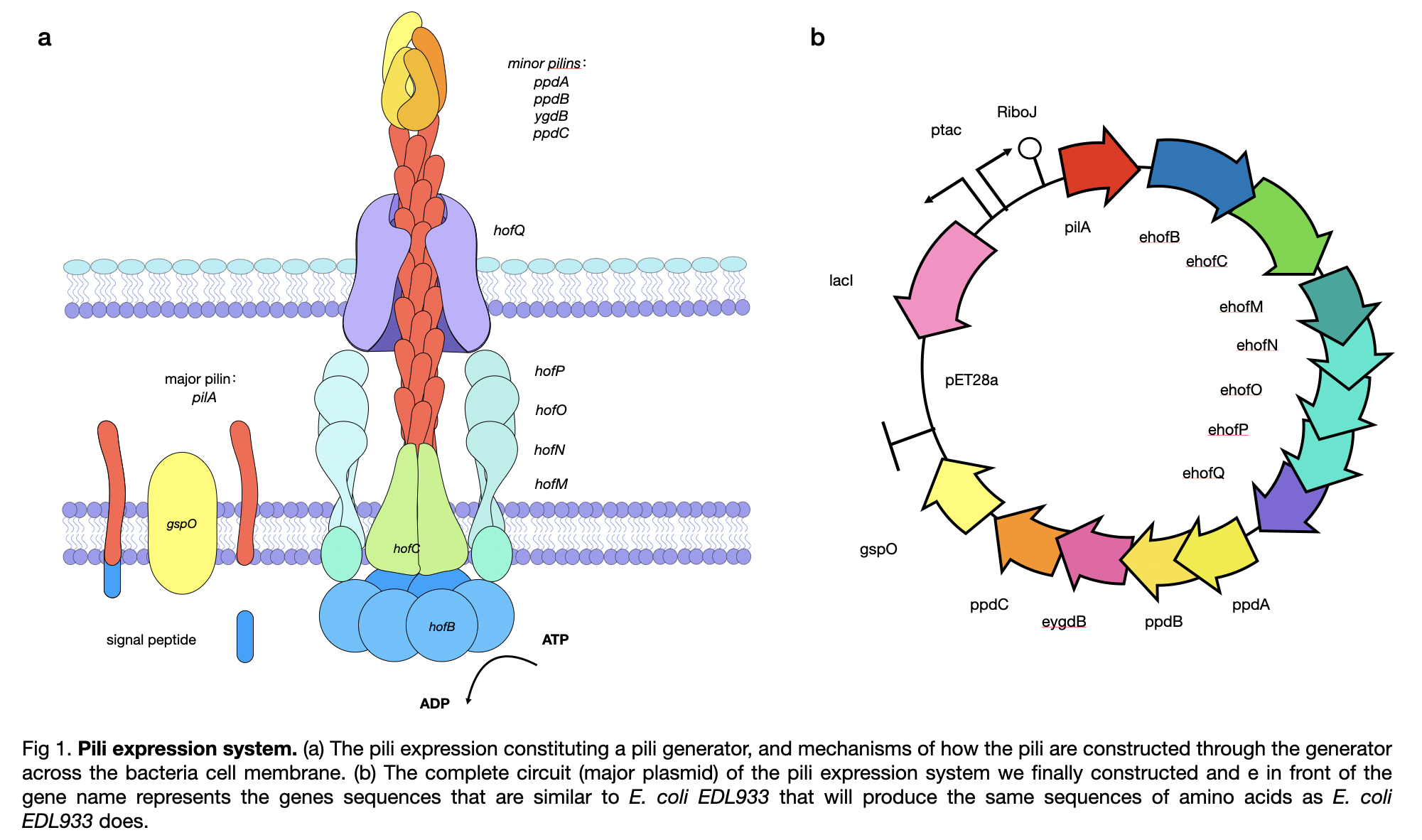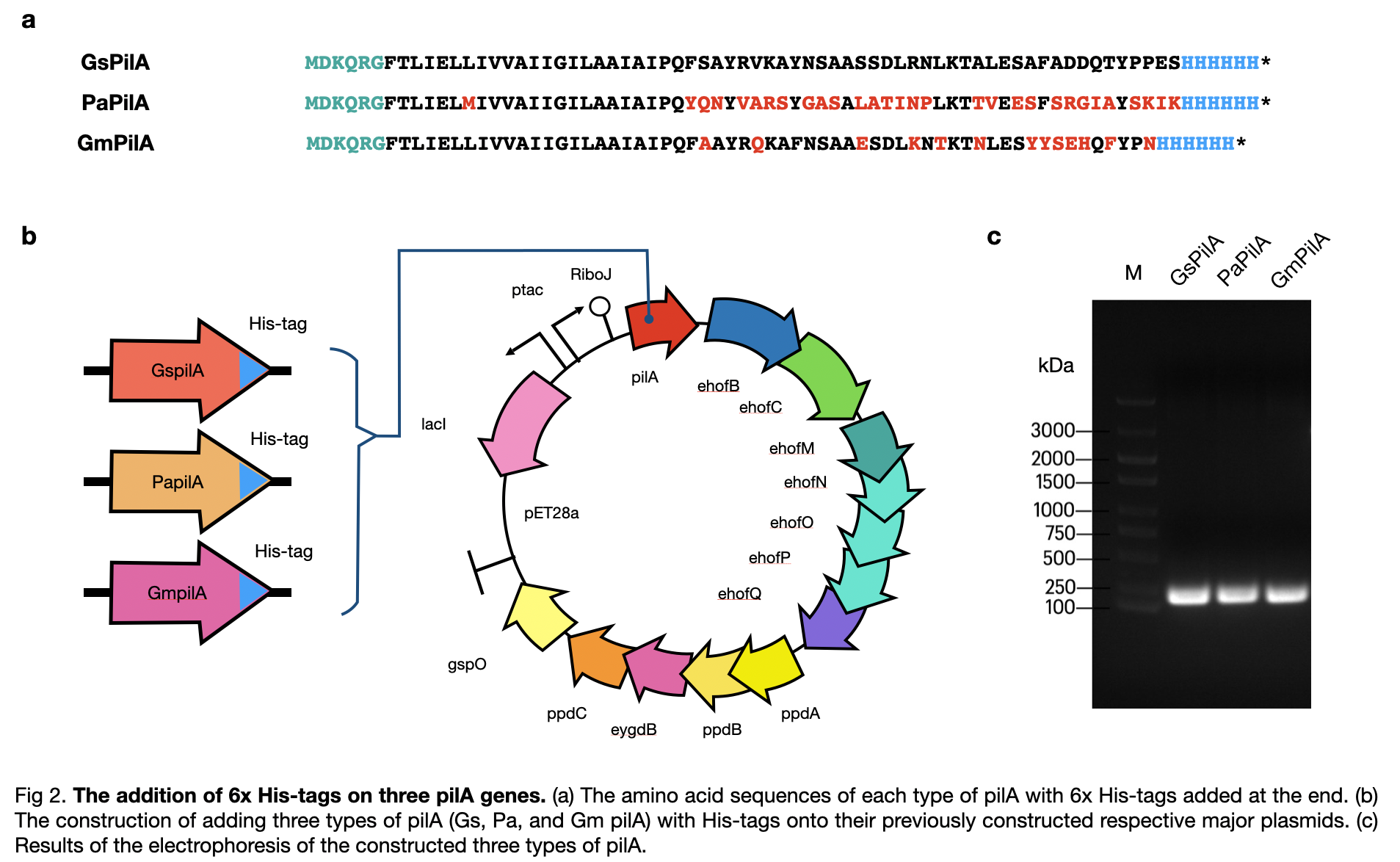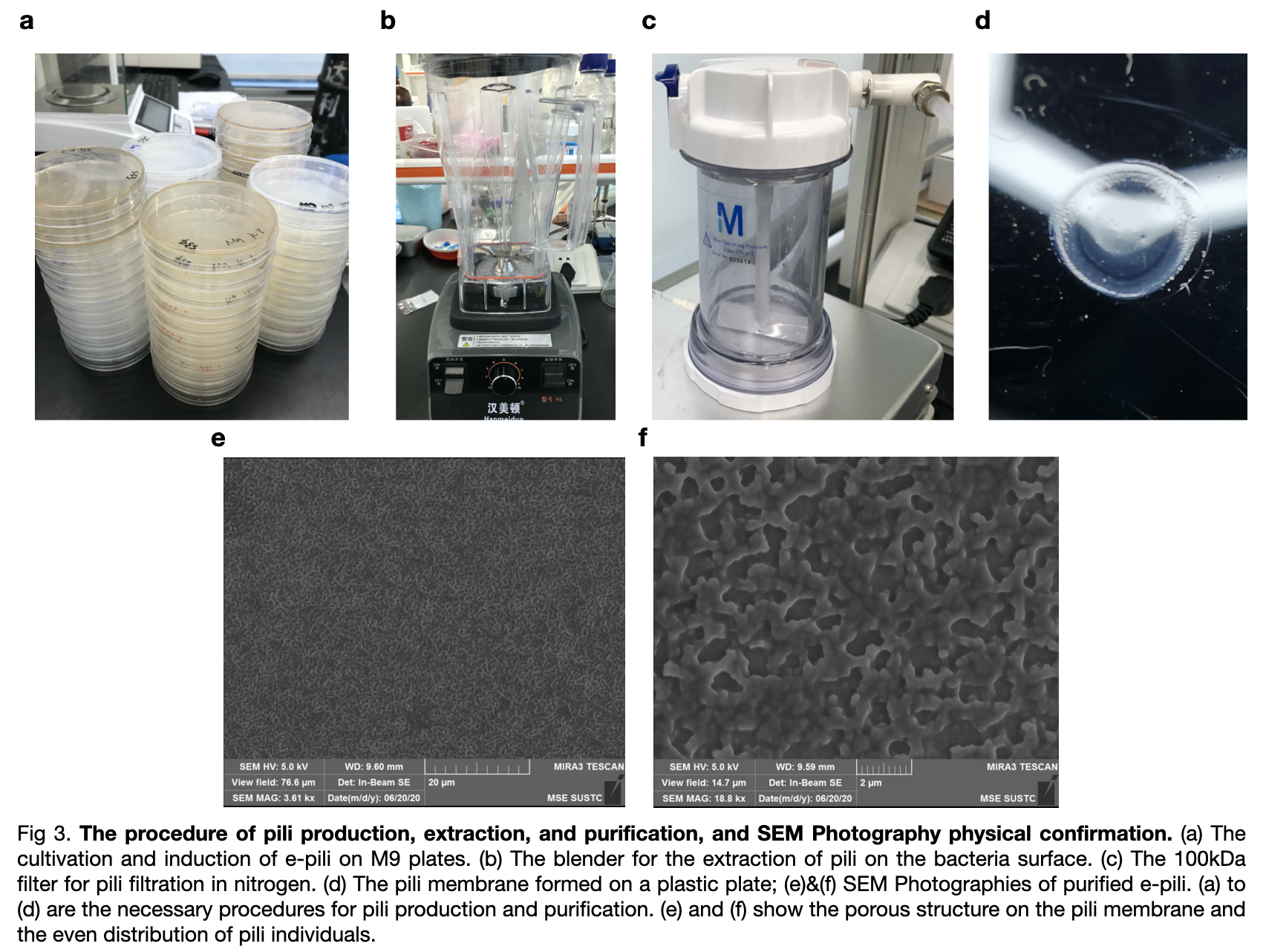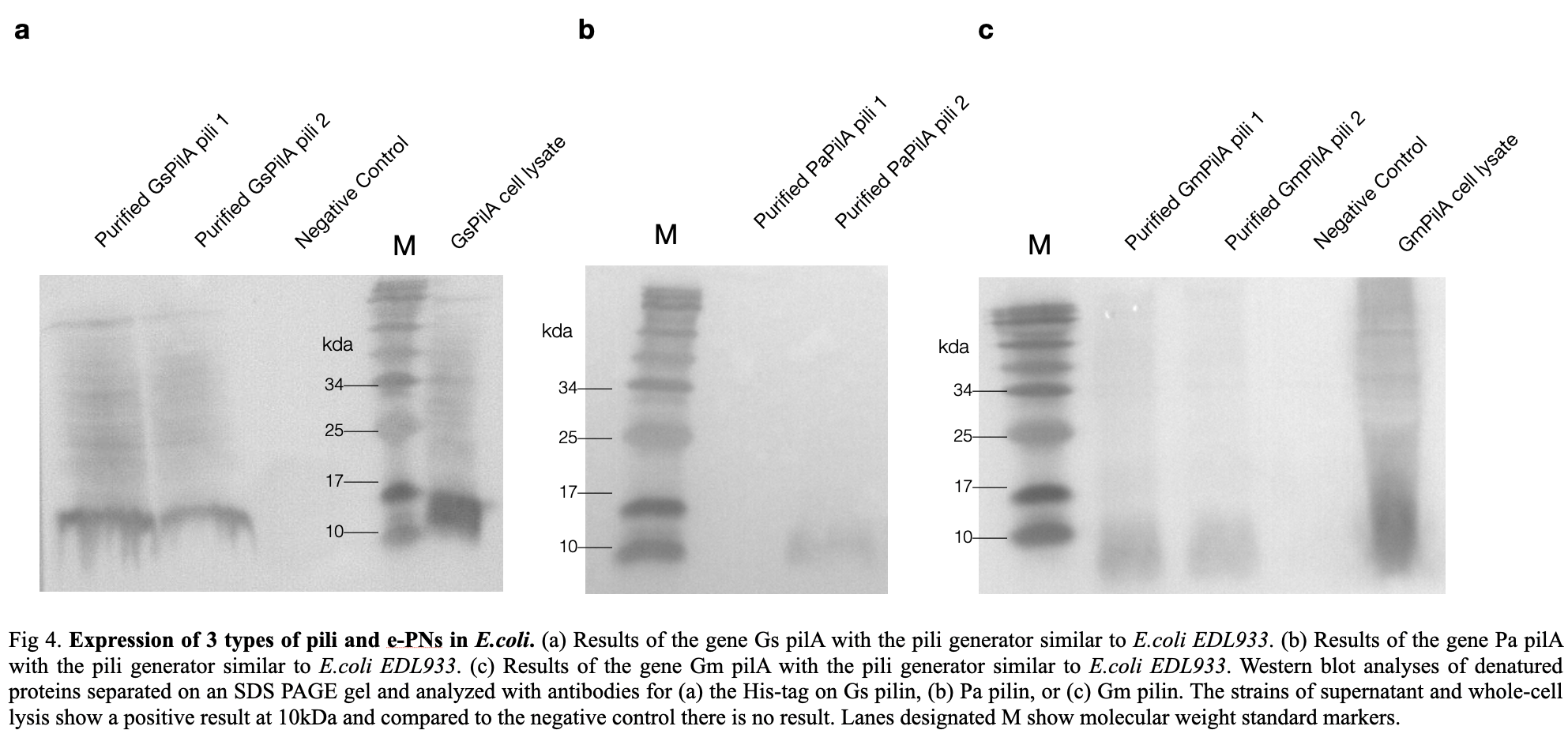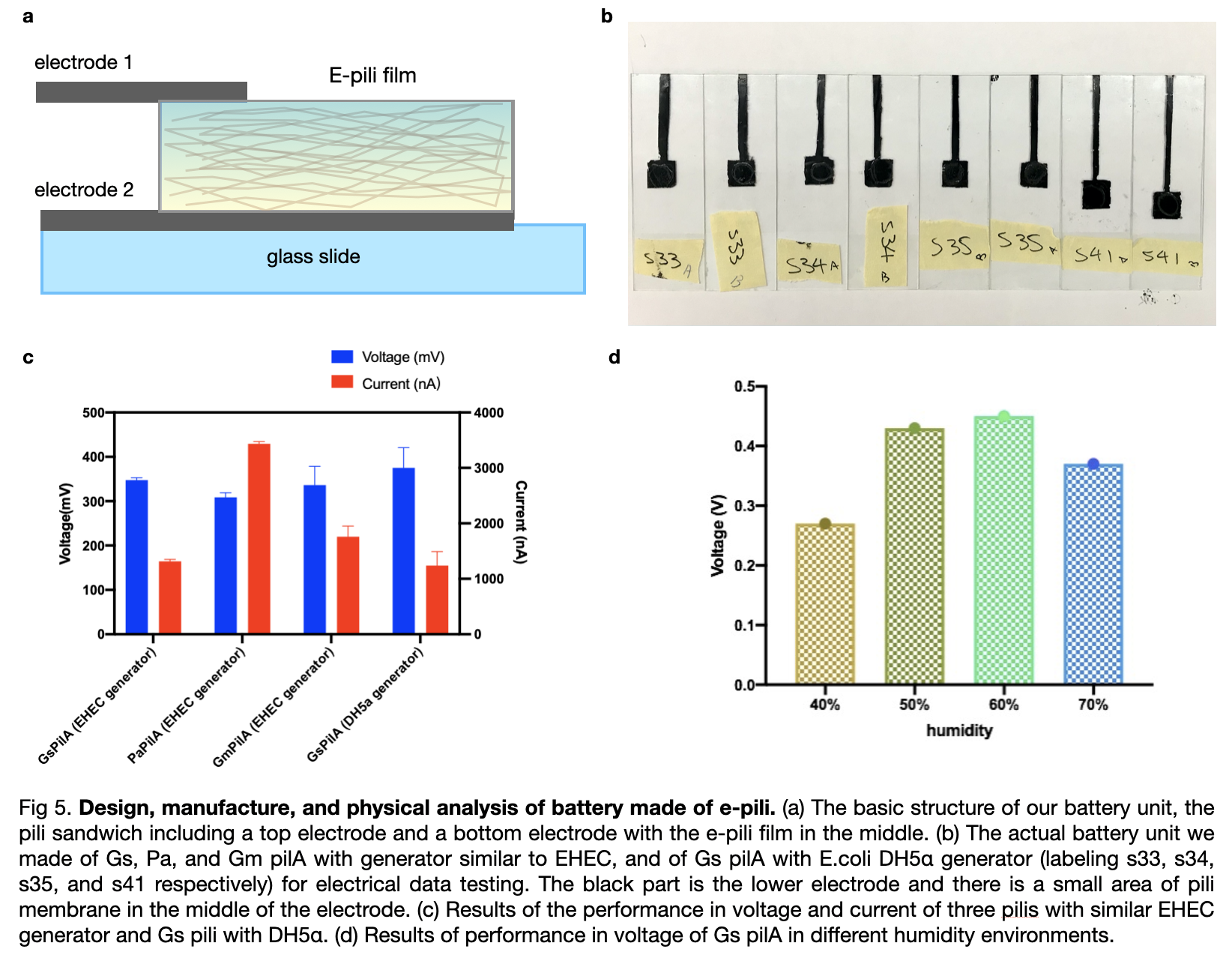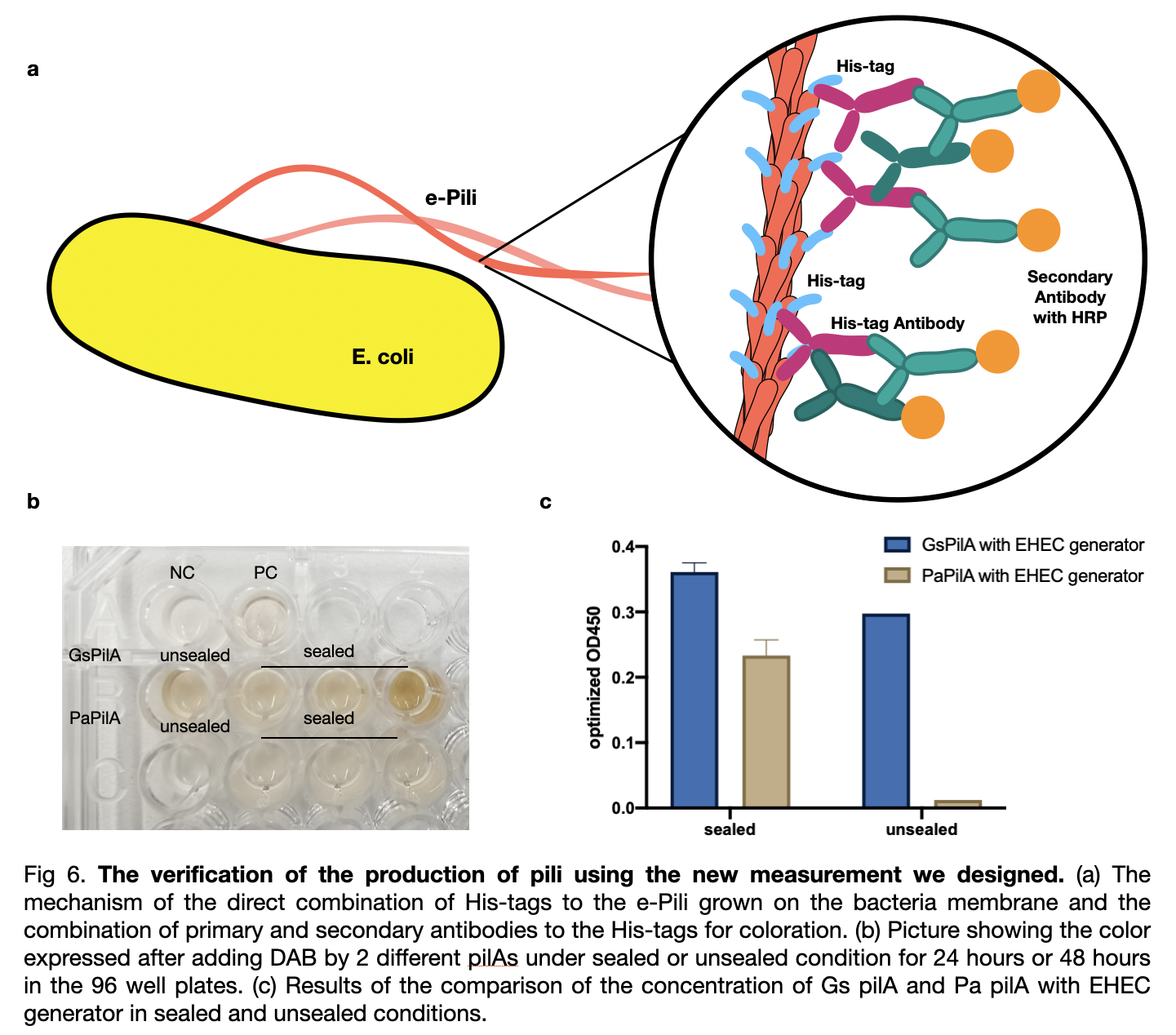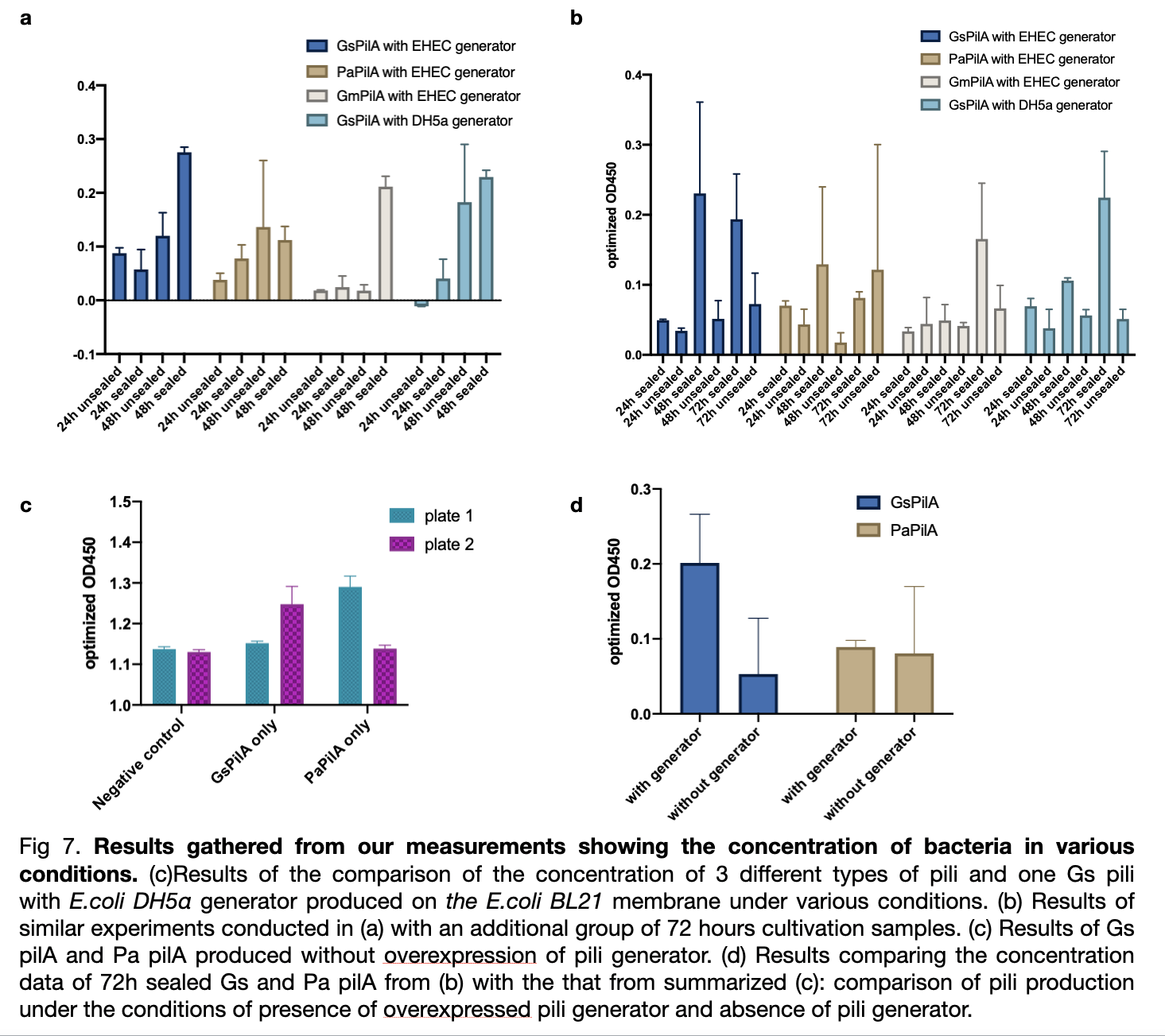Difference between revisions of "Part:BBa K3552000"
| Line 3: | Line 3: | ||
<partinfo>BBa_K3552000 short</partinfo> | <partinfo>BBa_K3552000 short</partinfo> | ||
| − | Geobacter sulfurreducens pilA(GsPilA) is a type 4 pilus usually found on Geobacter sulfurreducens which can conduct electricity. This part is in the part collection where we provide different conductive pilus based on the same pilin generator. By these different type 4 pilus we can compare the qualities of stability and yield. | + | Geobacter sulfurreducens pilA(GsPilA) is a type 4 pilus usually found on Geobacter sulfurreducens which can conduct electricity. This part is in the part collection where we provide different conductive pilus based on the same pilin generator. By these different type 4 pilus, we can compare the qualities of stability and yield. |
The part collection includes: | The part collection includes: | ||
| Line 35: | Line 35: | ||
<partinfo>BBa_K3552012</partinfo>. | <partinfo>BBa_K3552012</partinfo>. | ||
| − | Our part collection can instruct other teams to design new rechargeable pilus and substitute them to have more | + | Our part collection can instruct other teams to design new rechargeable pilus and substitute them to have more combinations that may achieve better performance in the future when manufacturing the batteries. |
<span class='h3bb'>'''Sequence and Features'''</span> | <span class='h3bb'>'''Sequence and Features'''</span> | ||
| Line 44: | Line 44: | ||
==Usage and Biology== | ==Usage and Biology== | ||
| − | GsPilA | + | GsPilA is a fimbrial protein that normally grows on Geobacter sulfurreducens. GsPilAs are type 4 pili that are long and thin, displaying on the cell surface membrane. They can promote adherence, motility, and transport functions in the bacteria. They are mainly built as helical polymers of a single subunit called the major pilin. These pilins are initially in the plasma membrane and the N-terminal is positively charged. The mature pilins can be extracted through the membrane by the pilin generator. |
==Characterization== | ==Characterization== | ||
| − | We first constructed the GsPilA by | + | We first constructed the gene, GsPilA, slicing by overlap extension by PCR through 8 different primers to obtain a similar DNA sequence as in the Geobacter sulfurreducens, which produce the same amino acid sequence. To get a complete pili production system, we constructed the generator of the pili and obtained a complete circuit of <partinfo>BBa_K3552010</partinfo> . |
[[File:T--LINKS China--Figure pili expression.jpeg|800px]] | [[File:T--LINKS China--Figure pili expression.jpeg|800px]] | ||
| Line 53: | Line 53: | ||
[[File:T--LINKS China--Figure his-tag addition.jpeg|800px]] | [[File:T--LINKS China--Figure his-tag addition.jpeg|800px]] | ||
| + | For pili expression, we chose E.coli BL21 because it is the best fit for our project as it has the highest pili yield and is easy to obtain. On the cultivation part, we cultured the bacteria in solid M9 mediums. Additionally, we provided the bacteria with glycerol as the carbon source because it was confirmed to help to improve the conductivity of the pili produced. | ||
| − | + | We transformed <partinfo>BBa_K3552010</partinfo> into Escherichia coli(E.coli) BL21. Then we cultivated the bacteria and harvested the bacteria from M9 plates after 48h cultivation by scrapping them off again with liquid M9 solution and collect the bacteria solution. Finally, by conducting the extraction and purification of the samples, we managed to get an amount Gs pili solution dissolving in 150mM ethanol-amine after filtration with a 100kDa membrane in nitrogen gas. | |
| − | + | ||
| − | + | ||
| − | + | ||
| − | We transformed <partinfo>BBa_K3552010</partinfo> into E.coli BL21. Then we cultivated the bacteria and harvested the bacteria from M9 plates after 48h cultivation by scrapping them off again with liquid M9 solution and collect the bacteria solution. Finally, by conducting the extraction and purification | + | |
[[File:T--LINKS China--Figure pilin production.jpeg|800px]] | [[File:T--LINKS China--Figure pilin production.jpeg|800px]] | ||
| − | We also ordered | + | We also ordered an SEM Photography for our pili on the photographs, we can see that the pili were distributed evenly on the surface in porous structures between each pili individuals. In order to confirm the E.coli produced the correct e-pili, we conducted a Western Blot experiment to convince the production. According to the positive strands on the membrane, we confirmed pili, with an expected molecular mass of 10kDa, was produced and purified successfully. |
[[File:T--LINKS China--Figure expression in E.coli.jpeg|800px]] | [[File:T--LINKS China--Figure expression in E.coli.jpeg|800px]] | ||
| − | We also conducted experiments to measure the | + | We also conducted experiments to measure the voltage of each battery. First, we manufactured six standard electrodes by using three pili, two pieces each, all with a triple layer of pili covered. Then we measured the voltage and compared the result which showed that Gm pili have the highest value of measured voltage while Gs pili have the least. |
[[File:T--LINKS China--Figure battery.jpeg|800px]] | [[File:T--LINKS China--Figure battery.jpeg|800px]] | ||
| − | In order to compare the pili yield, we established a new measurement for a quicker, clearer, and more accurate determination of pili production. We | + | In order to compare the pili yield, we established a new measurement for a quicker, clearer, and more accurate determination of pili production. We used his-tags antibodies to attach to the his-tags on the pili, and then the secondary antibodies will be attached to the his-tags antibodies for coloration directly on the outer membrane of the bacteria. We analyzed the data and included the effects of two variables on pili production: cultivation time and mobile oxygen presence. The result shows a ranking from Gs pili to Pa pili to Gm pili. |
[[File:T--LINKS China--Figure verification.jpeg|800px]] | [[File:T--LINKS China--Figure verification.jpeg|800px]] | ||
Revision as of 11:51, 27 October 2020
GsPilA
Geobacter sulfurreducens pilA(GsPilA) is a type 4 pilus usually found on Geobacter sulfurreducens which can conduct electricity. This part is in the part collection where we provide different conductive pilus based on the same pilin generator. By these different type 4 pilus, we can compare the qualities of stability and yield.
The part collection includes: Parts that are different kinds of type 4 pilus: BBa_K3552000 BBa_K3552001 BBa_K3552002. Parts that are the generator of the type 4 pilus: BBa_K3552003 BBa_K3552004 BBa_K3552005 BBa_K3552006 BBa_K3552007 BBa_K3552008 BBa_K3552018 BBa_K3552019 BBa_K3552020 BBa_K3552021 BBa_K3552022 BBa_K3552023 BBa_K3552024 BBa_K3552025 BBa_K3552026 BBa_K3552027 BBa_K3552028 BBa_K3552029. Parts that are a complete circuit: BBa_K3552009 BBa_K3552010 BBa_K3552011 BBa_K3552012.
Our part collection can instruct other teams to design new rechargeable pilus and substitute them to have more combinations that may achieve better performance in the future when manufacturing the batteries.
Sequence and Features
- 10COMPATIBLE WITH RFC[10]
- 12COMPATIBLE WITH RFC[12]
- 21COMPATIBLE WITH RFC[21]
- 23COMPATIBLE WITH RFC[23]
- 25COMPATIBLE WITH RFC[25]
- 1000COMPATIBLE WITH RFC[1000]
Reference
Luna Rico, Areli et al. “Functional reconstitution of the type IVa pilus assembly system from enterohaemorrhagic Escherichia coli.” Molecular microbiology vol. 111,3 (2019): 732-749. doi:10.1111/mmi.14188
Usage and Biology
GsPilA is a fimbrial protein that normally grows on Geobacter sulfurreducens. GsPilAs are type 4 pili that are long and thin, displaying on the cell surface membrane. They can promote adherence, motility, and transport functions in the bacteria. They are mainly built as helical polymers of a single subunit called the major pilin. These pilins are initially in the plasma membrane and the N-terminal is positively charged. The mature pilins can be extracted through the membrane by the pilin generator.
Characterization
We first constructed the gene, GsPilA, slicing by overlap extension by PCR through 8 different primers to obtain a similar DNA sequence as in the Geobacter sulfurreducens, which produce the same amino acid sequence. To get a complete pili production system, we constructed the generator of the pili and obtained a complete circuit of BBa_K3552010 .
For pili expression, we chose E.coli BL21 because it is the best fit for our project as it has the highest pili yield and is easy to obtain. On the cultivation part, we cultured the bacteria in solid M9 mediums. Additionally, we provided the bacteria with glycerol as the carbon source because it was confirmed to help to improve the conductivity of the pili produced.
We transformed BBa_K3552010 into Escherichia coli(E.coli) BL21. Then we cultivated the bacteria and harvested the bacteria from M9 plates after 48h cultivation by scrapping them off again with liquid M9 solution and collect the bacteria solution. Finally, by conducting the extraction and purification of the samples, we managed to get an amount Gs pili solution dissolving in 150mM ethanol-amine after filtration with a 100kDa membrane in nitrogen gas.
We also ordered an SEM Photography for our pili on the photographs, we can see that the pili were distributed evenly on the surface in porous structures between each pili individuals. In order to confirm the E.coli produced the correct e-pili, we conducted a Western Blot experiment to convince the production. According to the positive strands on the membrane, we confirmed pili, with an expected molecular mass of 10kDa, was produced and purified successfully.
We also conducted experiments to measure the voltage of each battery. First, we manufactured six standard electrodes by using three pili, two pieces each, all with a triple layer of pili covered. Then we measured the voltage and compared the result which showed that Gm pili have the highest value of measured voltage while Gs pili have the least.
In order to compare the pili yield, we established a new measurement for a quicker, clearer, and more accurate determination of pili production. We used his-tags antibodies to attach to the his-tags on the pili, and then the secondary antibodies will be attached to the his-tags antibodies for coloration directly on the outer membrane of the bacteria. We analyzed the data and included the effects of two variables on pili production: cultivation time and mobile oxygen presence. The result shows a ranking from Gs pili to Pa pili to Gm pili.
Eventually, we successfully acquired the gene GsPilA and verified its production of pili with the help of generators.

